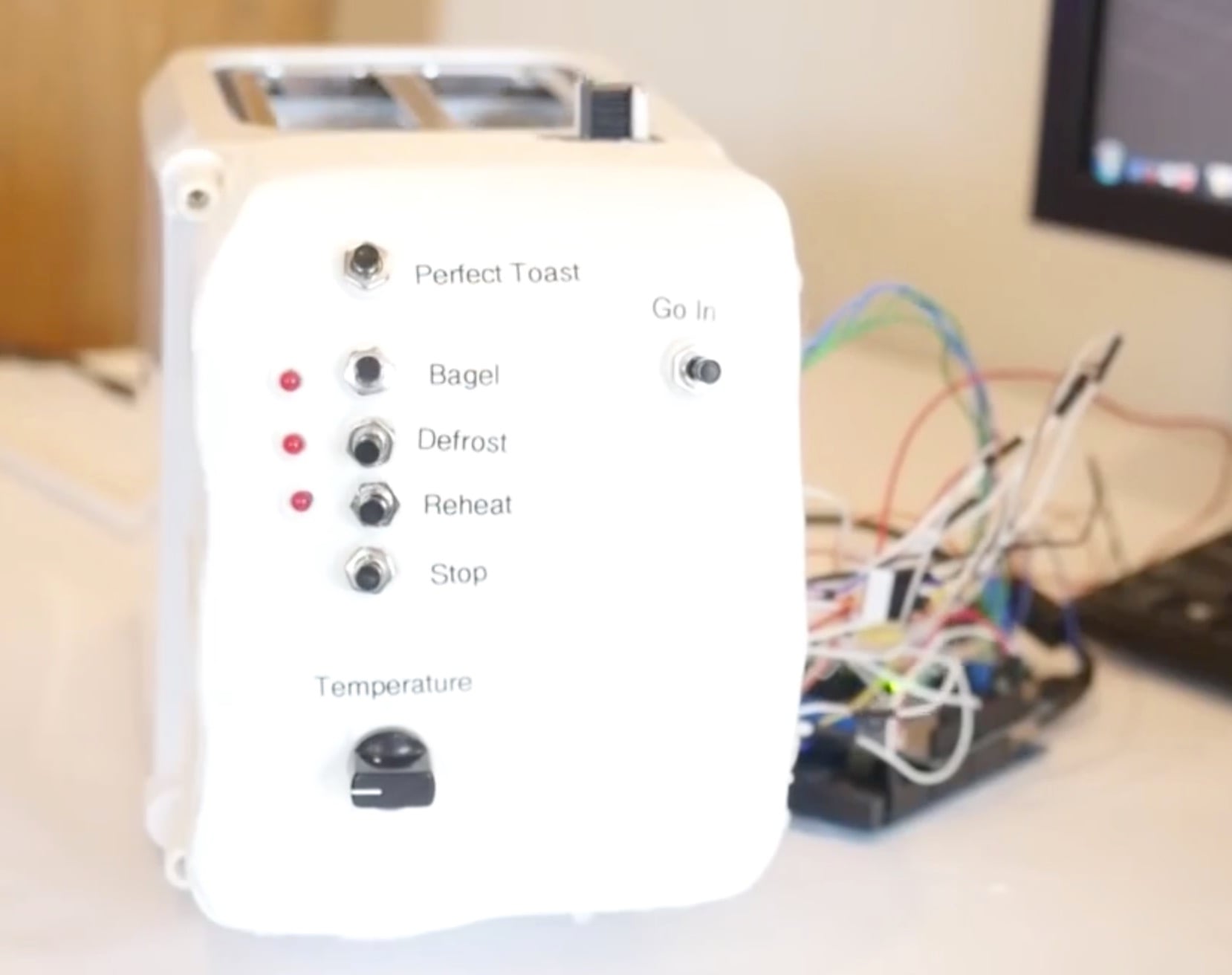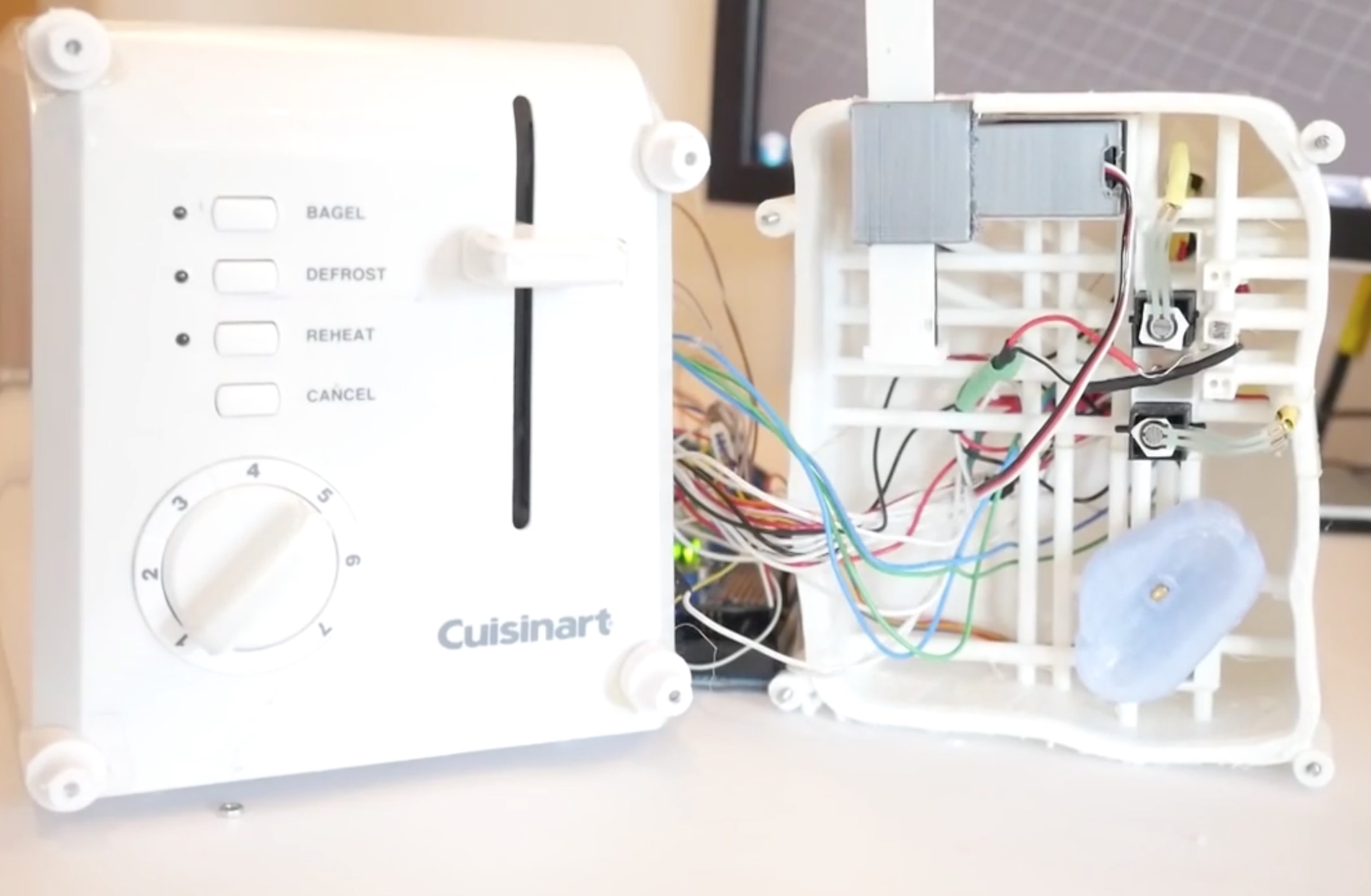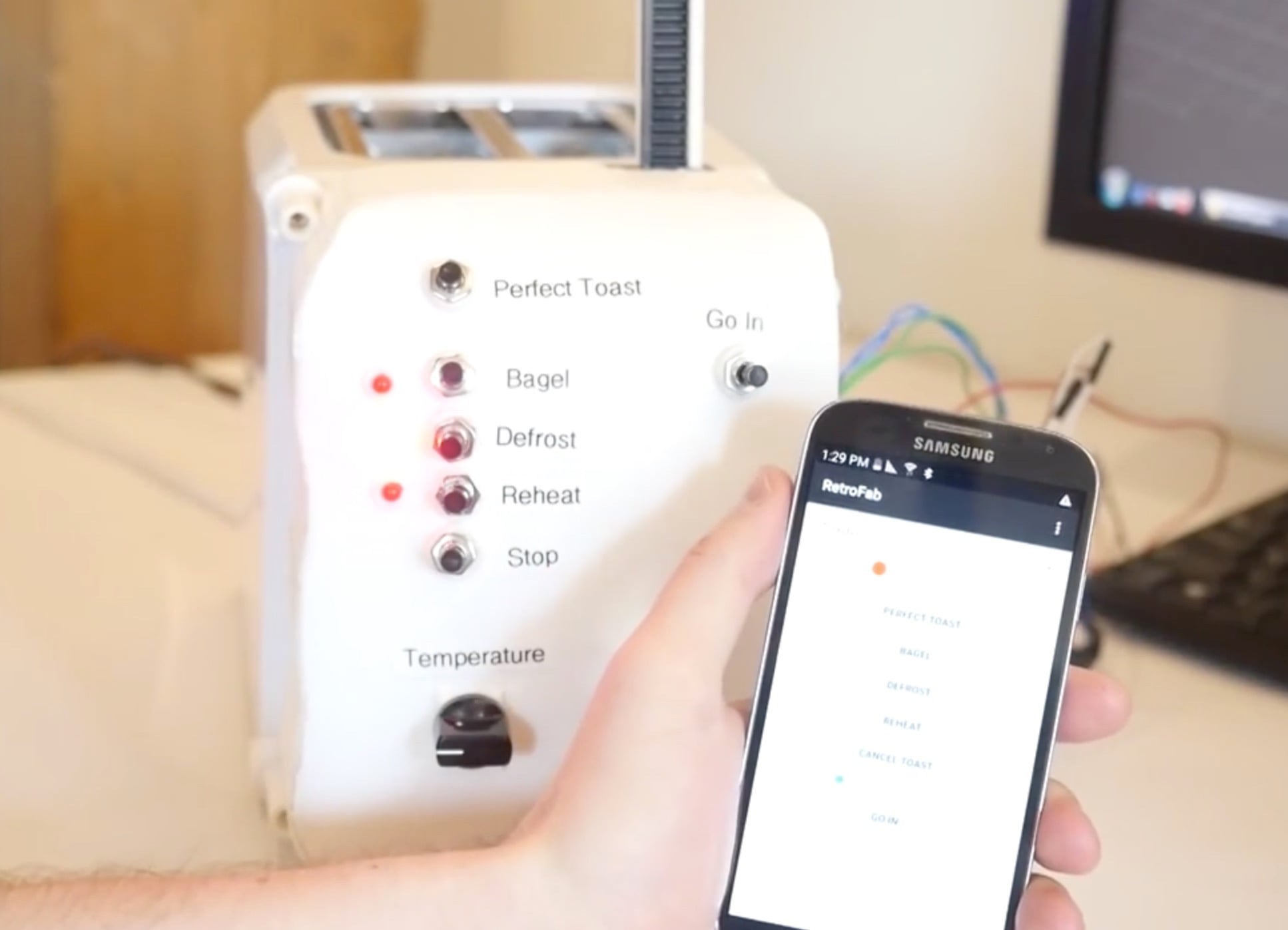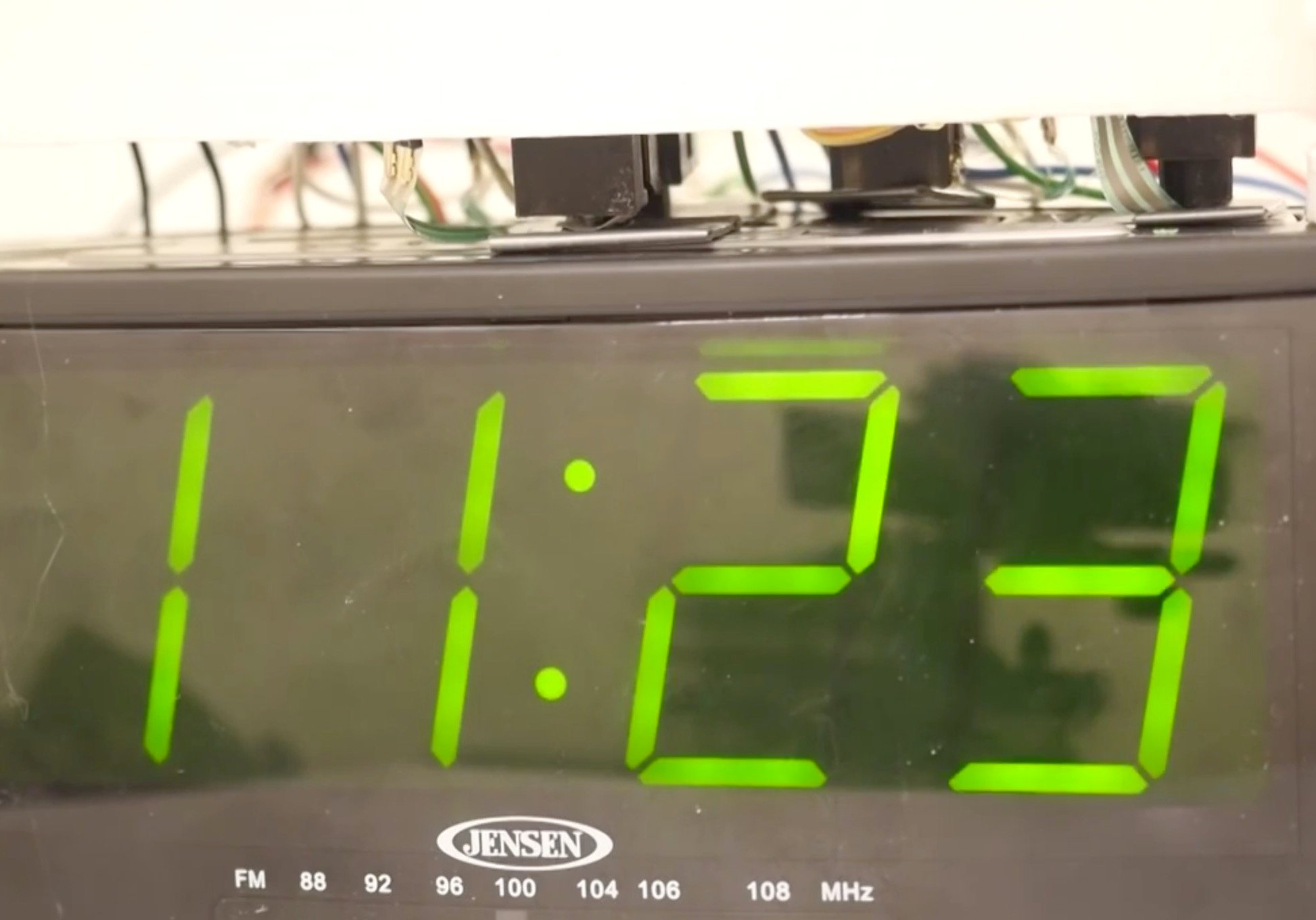
A bizarre project from Autodesk Labs investigates whether one can generate new physical interfaces for old appliances: They Can!
Here’s their project description:
We present RetroFab, an end-to-end design and fabrication environment that allows non-experts to retrofit physical interfaces. Our approach allows for changing the layout and behavior of physical interfaces. Unlike customizing software interfaces, physical interfaces are often challenging to adapt because of their rigidity. With RetroFab, a new physical interface is designed that serves as a proxy interface for the legacy controls that are now operated using actuators.
Basically, their system allows a user to graphically draw the existing buttons of an appliance, whereupon RetroFab generates a 3D model and actuators to control that button.

The 3D model can be printed and parts assembled into a kind of parasitic blob that is attached to the original appliance. Its actuators then operate the appliance in ways other than originally intended – but in ways that may meet your particular requirements better. RetroFab can also generate sensors as well.
This video shows how it works.
In the video, you’ll see how a toaster was equipped with a custom interface that implements a “Perfect Toast” sequence, in which the toast is defrosted before being browned to the preferred level.
Even more interesting is that the RetroFab controls are by default connected to an app, meaning a RetroFab interface is automatically remotely controllable and monitorable.

Interface generation is straightforward: users simply draw in crayon-style where the buttons exist on a 3D scan, and then specify what type of control it might be.
The app makes some very interesting workflows possible, as multiple RetroFab-controlled devices can be linked together. In the video, they cause a light to turn on when the alarm clock is reset, as well as launching “Perfect Toast”.

I think this is a fascinating experiment, but it’s just an experiment. While the software design interface looks pretty easy to use, it’s unclear to me whether very many in the general public would actually be able to think through the possibilities to arrive at a useful design.
One problem that could be improved is the appearance of the RetroFab controls, which in some cases look like parasitic blobs attached to the appliance. Some appliances are selected because of their appearance, and less because of their function. For those appliance-users, the parasitic-looking RetroFab modules would disturb the visuals and would become undesirable. I think RetroFab could be improved by generating more stylish modules.
But that’s a problem for another day.
Via RetroFab

